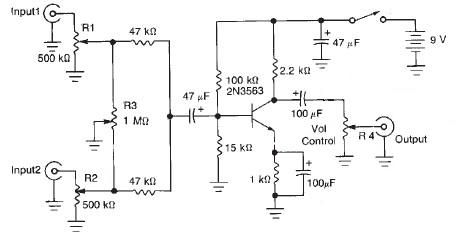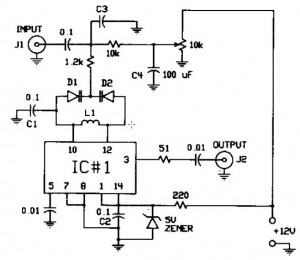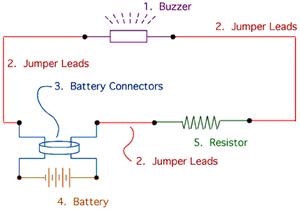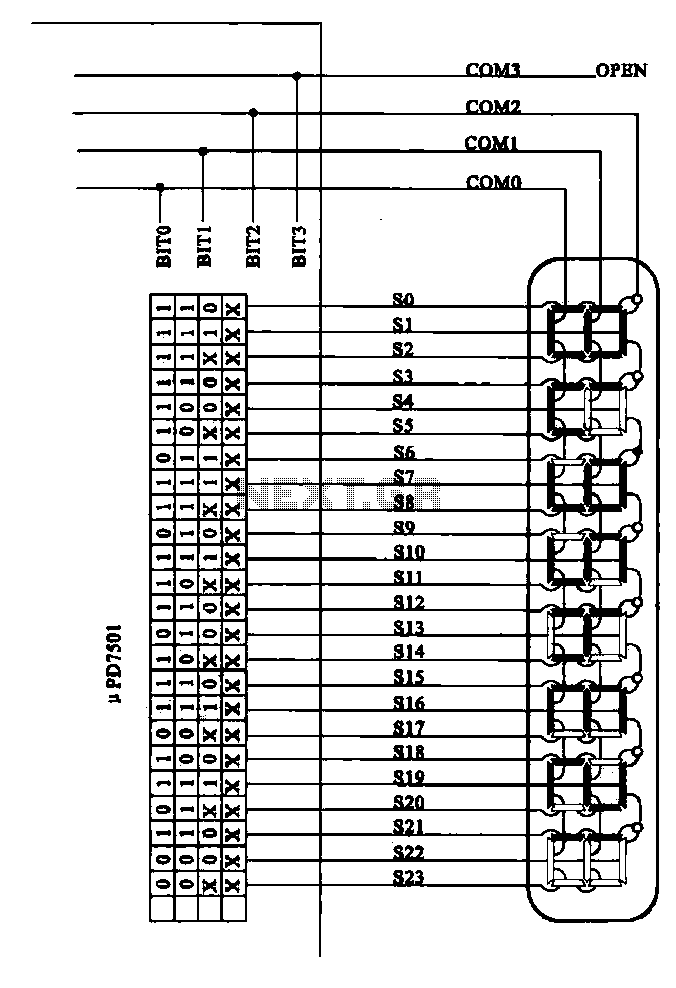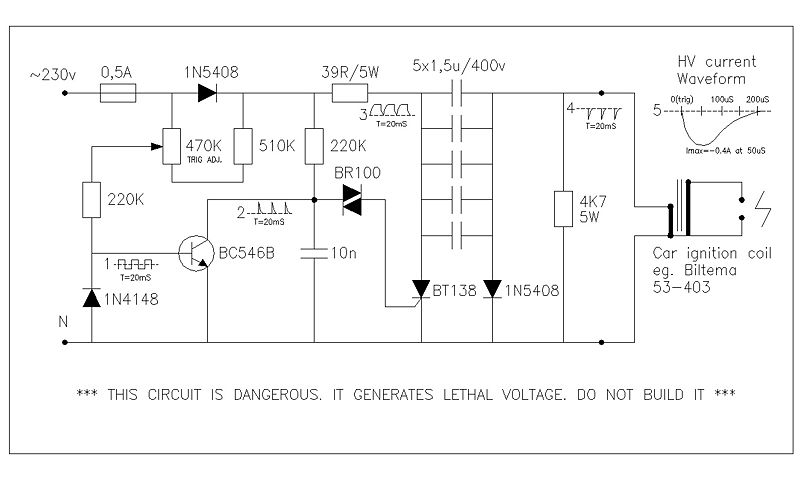
Adjustable pulse generator circuit
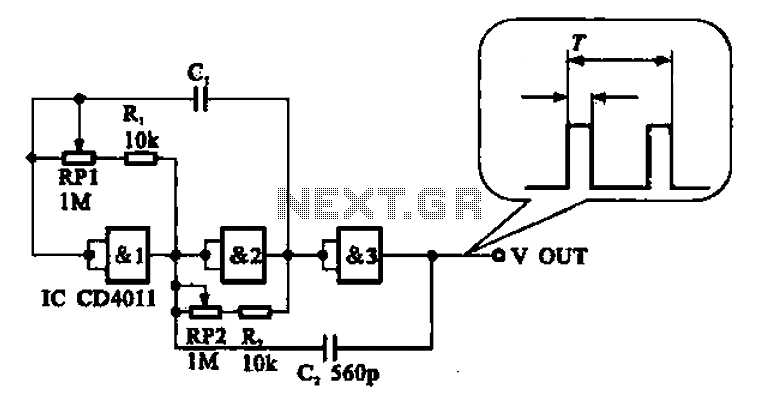
An adjustable pulse generator circuit is presented, which produces a periodic signal with independently adjustable pulse widths. The electrical path allows for modifications to the signal period through the adjustment of RP1. Additionally, RP2 can be altered to change the pulse width without affecting the output frequency of the generator. A reference table (Table 16-2) lists the various capacitor values corresponding to the available frequency ranges.
The adjustable pulse generator circuit typically consists of a few key components: resistors, capacitors, and operational amplifiers or timers, such as the 555 timer IC. The circuit operates by generating a square wave output, where the frequency and duty cycle can be modified according to the desired application.
In this configuration, RP1 serves as a variable resistor that adjusts the timing capacitor's charge and discharge cycle, effectively changing the period of the output waveform. This allows for fine-tuning of the frequency while maintaining the desired characteristics of the pulse. The second potentiometer, RP2, adjusts the pulse width by modifying the discharge time of the capacitor, thus allowing independent control over the width of the output pulses.
The frequency of the generator can be calculated using the formula:
\[ f = \frac{1.44}{(R1 + 2RP1) \cdot C} \]
where \( R1 \) is a fixed resistor, \( RP1 \) is the variable resistor, and \( C \) is the timing capacitor. The output frequency can be further referenced against the values provided in Table 16-2, which outlines suitable capacitor values for achieving specific frequency ranges.
This type of pulse generator is widely used in various applications, including clock generation for digital circuits, signal modulation, and testing of electronic components. The ability to adjust both the frequency and pulse width independently makes it a versatile tool in electronic design and experimentation.Adjustable pulse generator circuit Shows an adjustable pulse generator circuit, which is a periodic signal and the pulse width can be adjusted independently of each other and t he electrical path, can be adjusted to change the period of the signal RP1 n can be adjusted to change the pulse RP2, but not affect the output frequency of the generator. Table 16-2 lists the different C. The value of the frequency range available for reference.
The adjustable pulse generator circuit typically consists of a few key components: resistors, capacitors, and operational amplifiers or timers, such as the 555 timer IC. The circuit operates by generating a square wave output, where the frequency and duty cycle can be modified according to the desired application.
In this configuration, RP1 serves as a variable resistor that adjusts the timing capacitor's charge and discharge cycle, effectively changing the period of the output waveform. This allows for fine-tuning of the frequency while maintaining the desired characteristics of the pulse. The second potentiometer, RP2, adjusts the pulse width by modifying the discharge time of the capacitor, thus allowing independent control over the width of the output pulses.
The frequency of the generator can be calculated using the formula:
\[ f = \frac{1.44}{(R1 + 2RP1) \cdot C} \]
where \( R1 \) is a fixed resistor, \( RP1 \) is the variable resistor, and \( C \) is the timing capacitor. The output frequency can be further referenced against the values provided in Table 16-2, which outlines suitable capacitor values for achieving specific frequency ranges.
This type of pulse generator is widely used in various applications, including clock generation for digital circuits, signal modulation, and testing of electronic components. The ability to adjust both the frequency and pulse width independently makes it a versatile tool in electronic design and experimentation.Adjustable pulse generator circuit Shows an adjustable pulse generator circuit, which is a periodic signal and the pulse width can be adjusted independently of each other and t he electrical path, can be adjusted to change the period of the signal RP1 n can be adjusted to change the pulse RP2, but not affect the output frequency of the generator. Table 16-2 lists the different C. The value of the frequency range available for reference.
